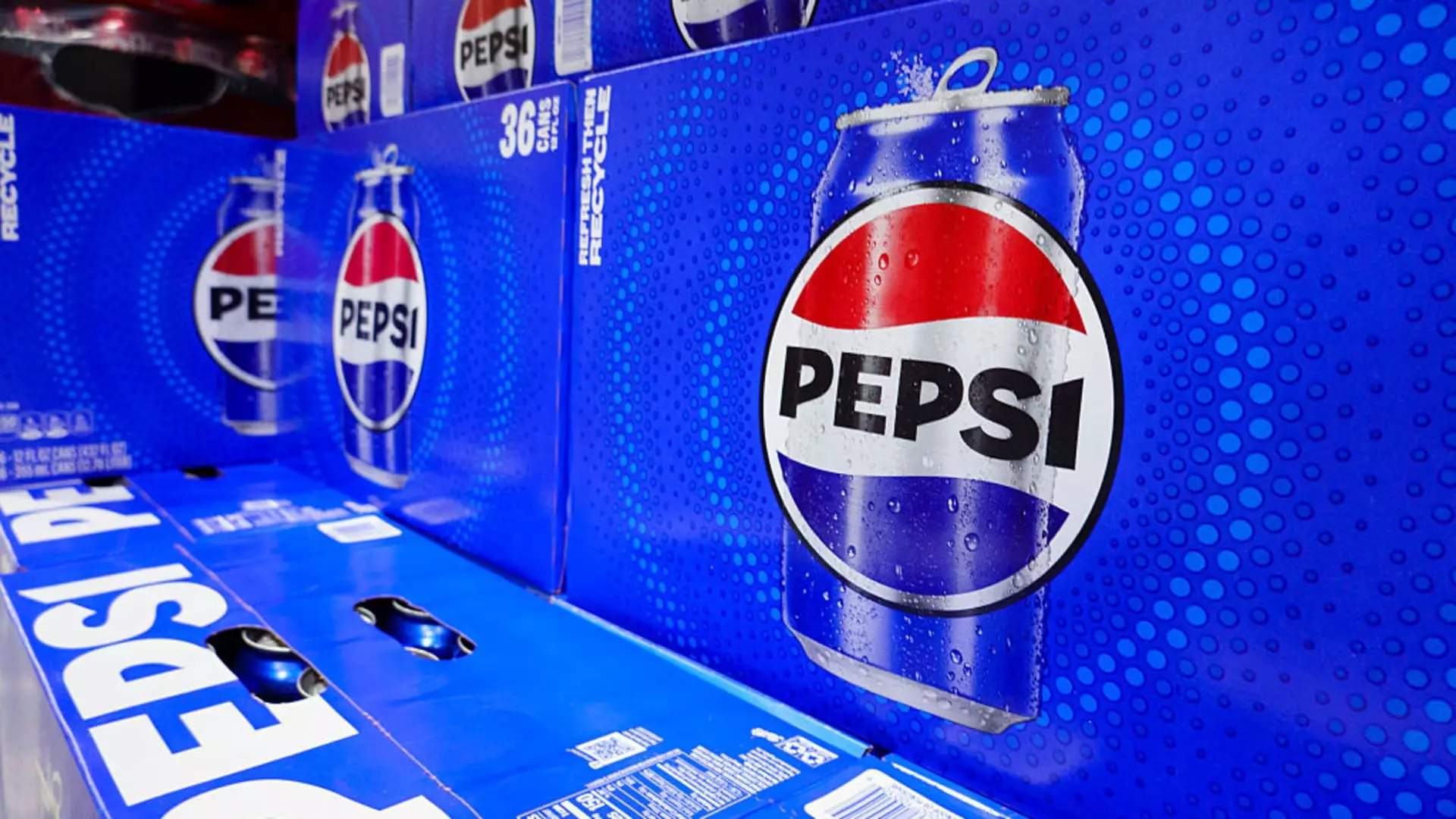PepsiCo’s latest quarterly report presents a paradox. While the company managed to beat Wall Street’s expectations on earnings and revenue, the underlying story is far more complex and troubling than the surface figures suggest. A closer look reveals a corporation under pressure—facing declining demand in its core North American markets, grappling with shifting consumer preferences, and actively seeking cost-cutting measures to maintain profitability. This duality—strength masked by underlying vulnerabilities—illustrates the precarious position of a global giant contending with a rapidly changing landscape.
What stands out most is the sharp decline in net income compared to the previous year—down from $3.08 billion to $1.26 billion. Despite an increase in revenue and organic sales, these profit figures highlight a sobering reality: top-line growth is no longer enough to ensure stability. The company’s adjusted earnings per share of $2.12 slightly surpassed expectations, yet behind this modest victory lies a pattern of contraction in volume, especially within North America. The volume decline in both food (-1.5%) and beverages (flat to -2%) signals waning consumer engagement, hinting at deeper issues beyond mere market fluctuations.
The Illusion of Success: A Masked Reality of Declining Demand
Perception often favors the surface-level victory—shares rising in premarket trading—but the realities delay a more somber evaluation. Demand for PepsiCo’s products wanes in its most lucrative markets, driven by a shift toward healthier or more diverse food choices. The company’s efforts to pivot by introducing protein-rich and multicultural offerings are steps in the right direction, but they are perhaps insufficient to combat the erosion of traditional consumption patterns.
Moreover, the company’s North American units are experiencing declines despite the strategic push into new segments. The food division, including Frito-Lay and Quaker, saw a 1% volume decline, while beverage volumes within the domestic market tumbled by 2%. Even flagship products like Coca-Cola are feeling the pinch, forcing Pepsi to find growth in innovative niches like Pepsi Zero Sugar, which managed to secure double-digit growth—a clear indicator that traditional sugary drinks are losing their appeal. But these gains, while encouraging, do not resolve the broader competitive pressures or the declining overall demand.
Strategic and Financial Maneuvers: Short-Term Tactics or Long-Term Solutions?
In response, PepsiCo is executing aggressive cost-cutting measures—closing plants and streamlining logistics—to preserve margins. Such actions underscore a reactive stance that risks shortchanging long-term growth for immediate financial relief. The decision to shutter two manufacturing sites for its North American food operations signals a retreat from capacity in favor of efficiency; yet, this could further alienate consumers or lead to supply chain hiccups if not managed carefully.
The company’s focus on marketing efficiency and integrating its divisions points to an acknowledgment of internal redundancies that can be eliminated. However, this raises questions about innovation versus consolidation: Are these measures enough to re-energize sales in mature markets? Or are they merely delaying an inevitable reckoning—where declining demand forces permanent tightening of the belt rather than sustainable growth?
Furthermore, the company’s guidance—predicting only low-single-digit organic revenue growth and flat earnings per share—reflects an acceptance of a new normal. Economic uncertainty, tariffs, and cautious consumer behavior are cited as contributing factors, but they also serve as plausible excuses to mask deeper structural challenges. Pepsi’s willingness to adapt—by refining marketing spends and exploring diversification—demonstrates flexibility, but it may be insufficient to turn the tide.
A Reflection on Corporate Resilience and Future Outlook
PepsiCo’s recent performance exemplifies a broader theme common among legacy consumer giants: resilience amidst adversity. The company’s ability to post better-than-expected figures despite falling volumes and shrinking market share speaks to a formidable brand presence and strategic agility. Yet, this resilience is fragile, built on cost-cutting rather than organic growth, and facing headwinds from health trends and changing demographics.
From a center-left liberal perspective, PepsiCo’s situation underscores the importance of sustainable innovation and consumer-centric strategies over superficial metrics. Profitability driven by efficiencies alone risks neglecting the deeper need to align with societal shifts—particularly toward health, diversity, and mindful consumption. The challenge lies not just in maintaining share prices or margins but in reimagining what a company like PepsiCo can be in a world increasingly skeptical of sugary drinks and processed foods.
Pepsi’s ongoing efforts to capitalize on emerging trends while limiting its exposure to traditional products represent a necessary, but incomplete, step towards adaptability. Ultimately, the company’s future depends on its ability to balance immediate financial positioning with genuine innovation—embracing a transformation that prioritizes long-term health of its brand and its consumer base over fleeting market gains.


Leave a Reply